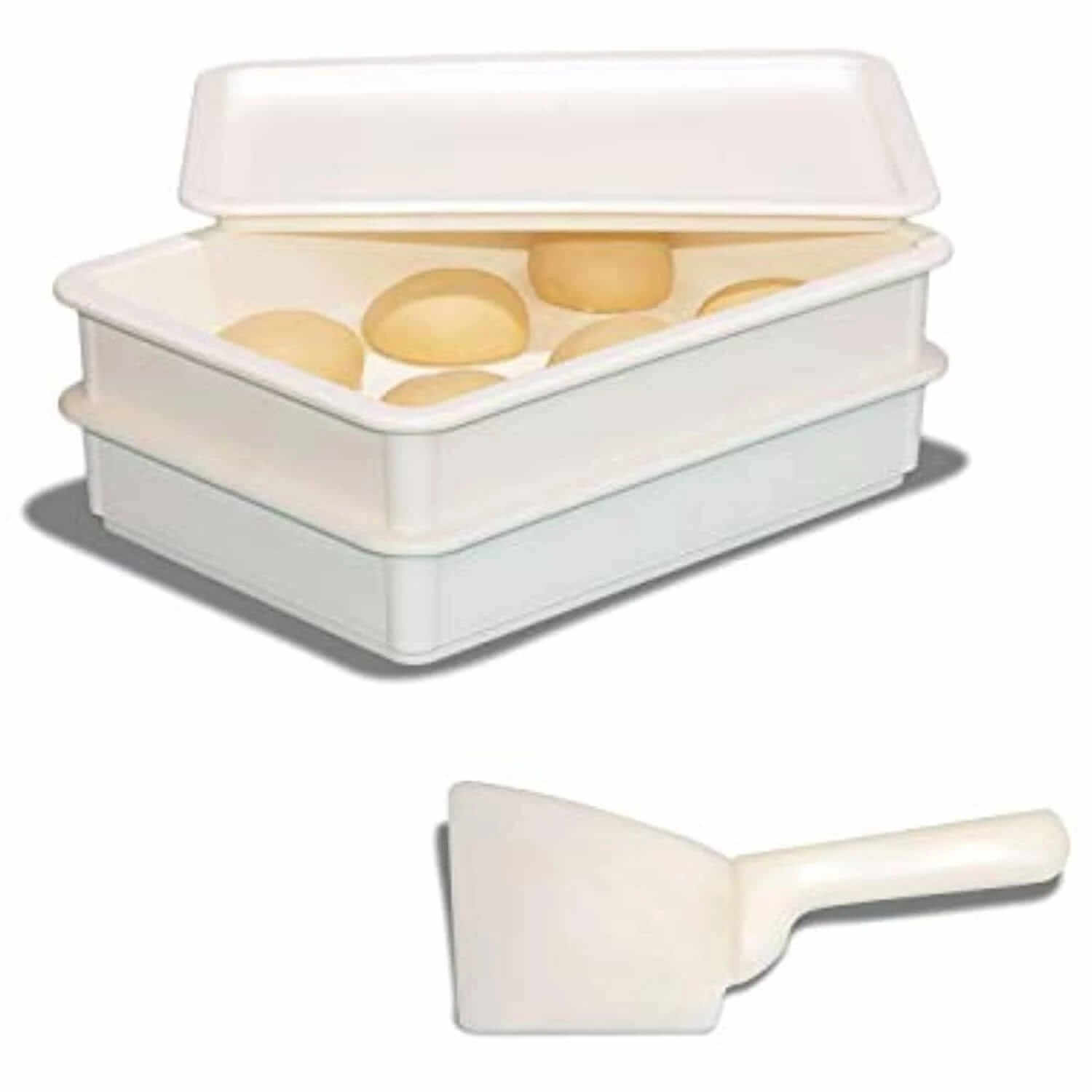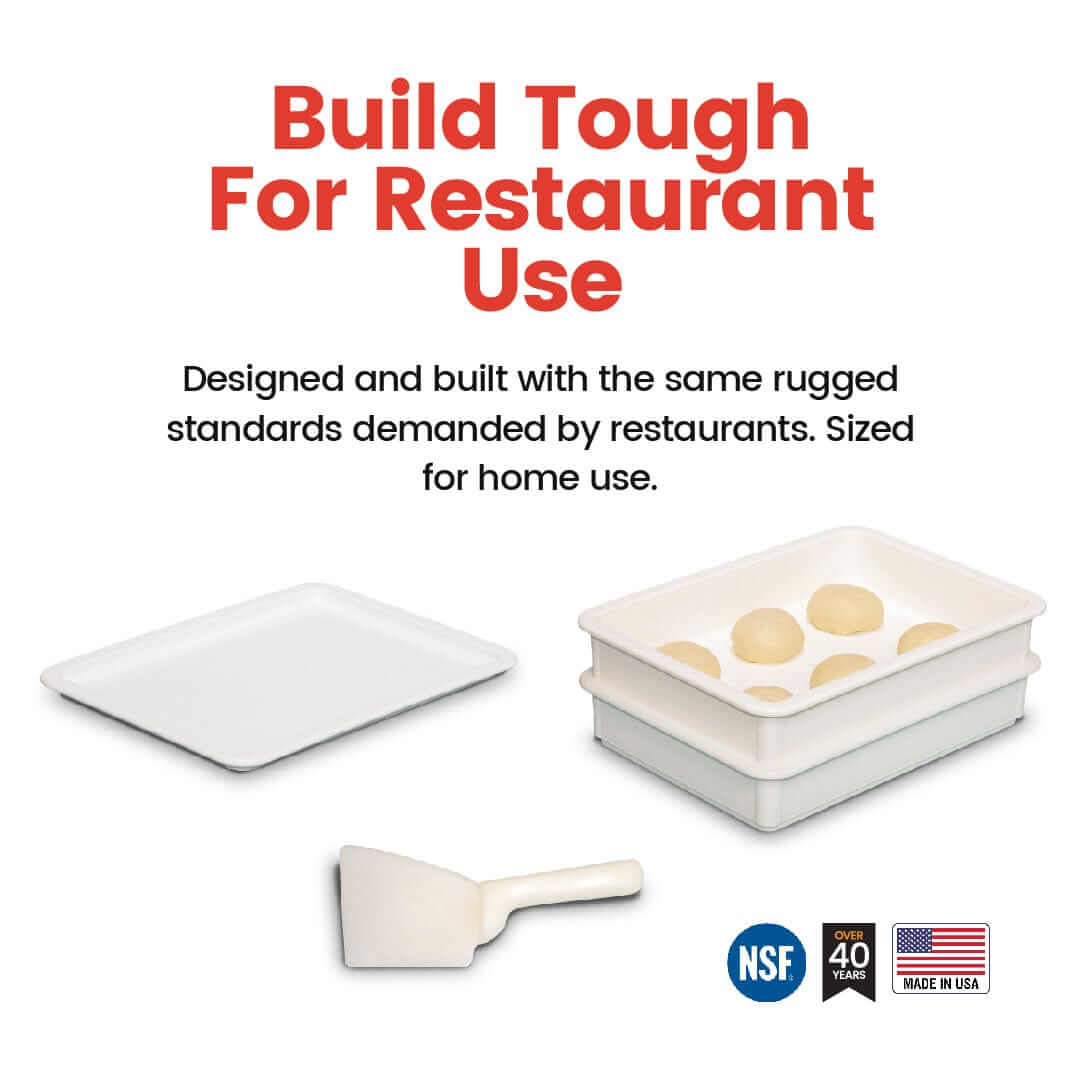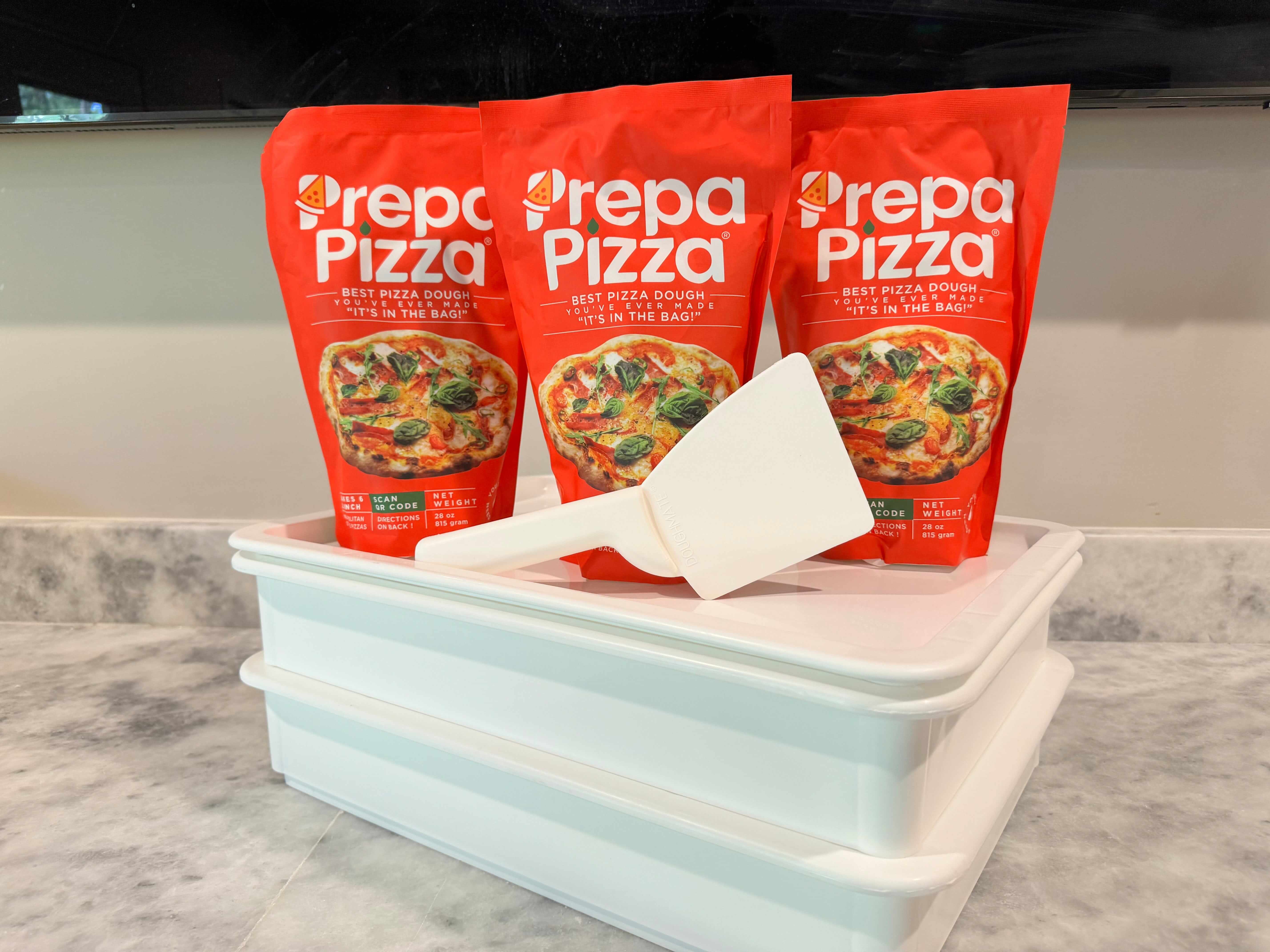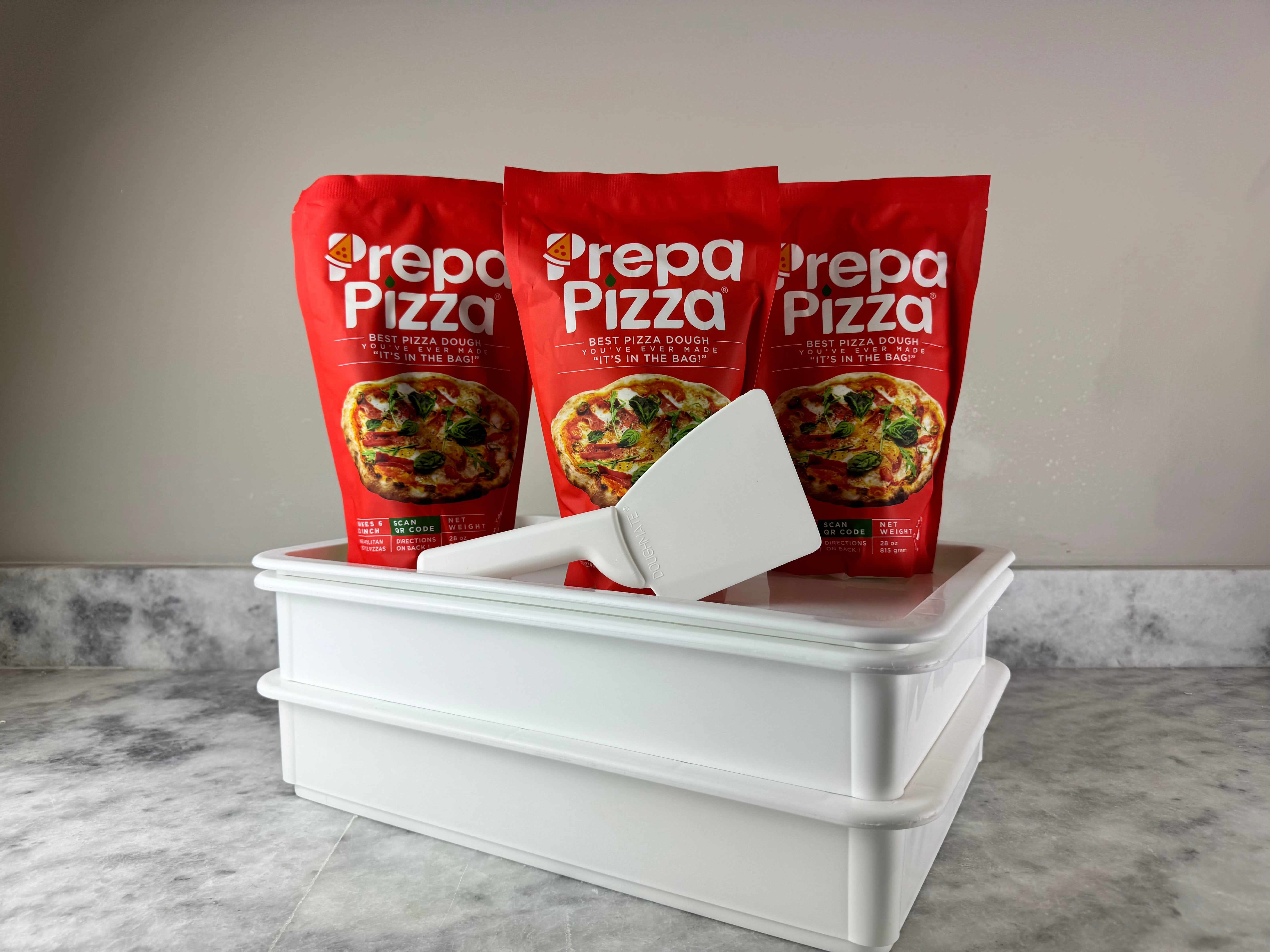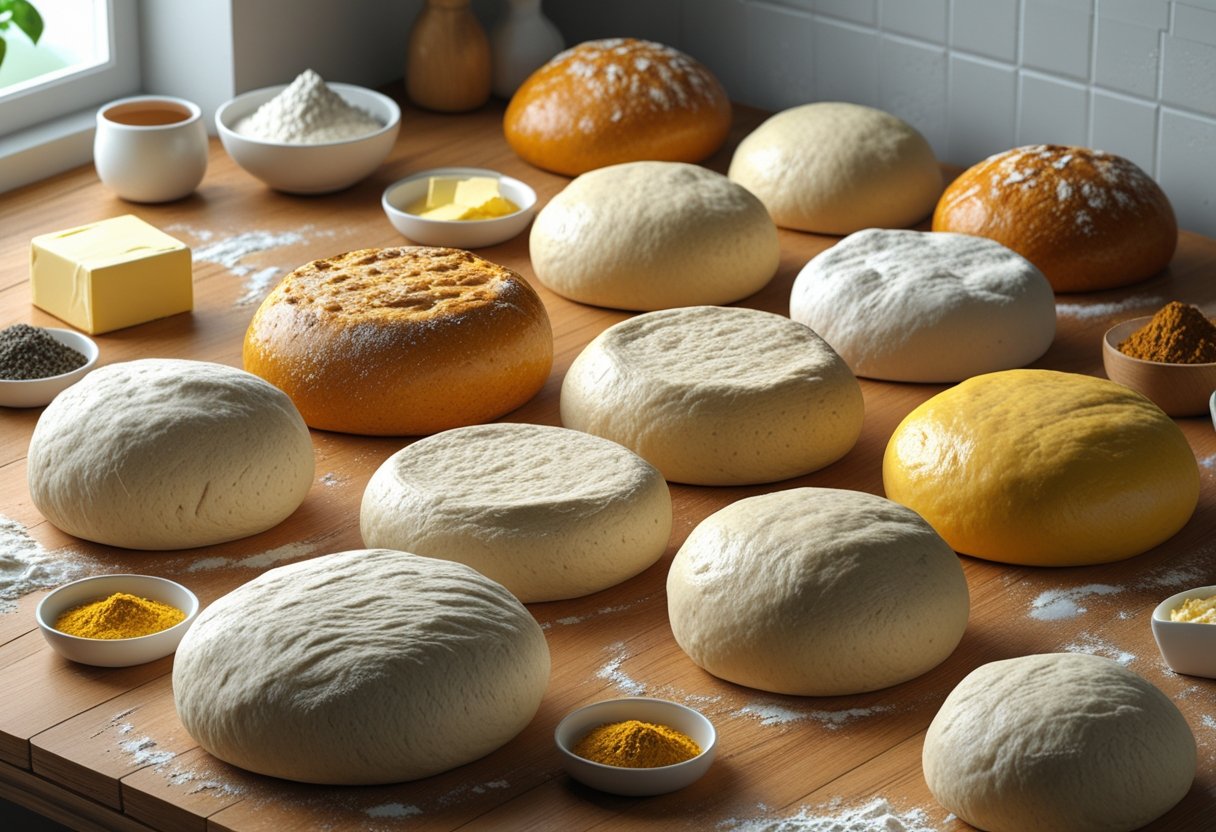
What Is the Difference Between Dough Types Explained: Key Insights for Baking Success
Understanding the difference between dough types is essential for anyone who wants to make the best pizza or baked goods. Dough varies primarily by ingredients and preparation methods, which affect texture, flavor, and how the dough behaves during baking. Using the right dough can transform your final product from ordinary to restaurant-quality.
If you’re looking for consistent results without the hassle of making dough from scratch, Prepa Pizza offers premium premade dough made with quality ingredients designed to deliver great taste and texture every time. Their dough kit lets you focus on crafting your perfect pizza without worrying about the tricky parts of dough preparation. Check out the Prepa Pizza premade dough kit to see how easy it is to elevate your pizza experience.
By knowing what sets different dough types apart—whether leavened or unleavened, laminated or simple—you gain control over the outcome of your baking. This knowledge allows you to choose the dough suited to your style, desired texture, and flavor, making your pizza or pastry more enjoyable every time.
Key Differences Between Dough Types
Dough types differ mainly in their ingredients, handling, and final texture. How you combine flour, water, fat, and leavening agents directly affects the dough’s elasticity, softness, and rise. These factors shape the dough’s purpose, from chewy bread to flaky pastries.
Using premium dough like Prepa Pizza's premade dough ensures consistent quality and proper gluten development, improving your final dish. You can find their high-quality Prepa Pizza Dough Kit to simplify your baking and cooking.
Definitions and Characteristics
Dough is a pliable mixture primarily made from flour and liquid, often including fats and leavening agents. It is thick enough to be kneaded or shaped by hand, unlike batter, which is pourable.
Different doughs serve specific culinary needs: bread dough aims for elasticity and rise, while pastry dough tends to be delicate and flaky due to higher fat content. Laminated doughs combine fat layers with dough for flakiness, unlike basic bread dough designs.
Your choice of dough depends on the desired outcome, whether it’s a chewy pizza crust or a tender pastry shell. These characteristics, like leavening type and proportion of fat, define the dough’s baking behavior and texture.
Role of Flour and Gluten Development
Flour is the backbone of dough. The type and protein content in flour directly influence gluten formation. Gluten is a network of proteins that gives dough elasticity and strength.
High-gluten flours help create chewy textures typical in pizza or bread dough. When you knead the dough, gluten strands organize and stretch, enabling the dough to trap air during rising.
Pastry dough uses lower-gluten flour and less kneading to avoid over-developing gluten. This keeps your crust tender and flaky, rather than tough.
Prepa Pizza’s premade dough uses flour with optimized protein content to maintain the right gluten balance, making it easier for you to get consistent texture and stretchability suited for pizza.
Texture and Consistency
Texture varies from soft and pliable to firm and crumbly. Bread dough is usually sticky and elastic due to its gluten development, allowing it to stretch and expand without tearing.
Pastry or biscuit dough, by contrast, is firmer and often crumbly because of higher fat content that inhibits gluten formation. This fat coats flour particles, limiting water absorption and gluten development.
Consistency also depends on hydration levels. Higher water content yields a softer, stickier dough, common in artisan breads, while lower hydration results in stiffer dough suitable for cookies or pie crusts.
Prepa Pizza’s premade dough balances hydration and fat content to give you a dough with ideal elasticity and firmness for a perfect pizza base.
Leavening and Rise
Leavening agents cause dough to rise by producing gas, creating air pockets for softness and volume. Common agents include yeast, baking powder, and baking soda.
Bread dough relies on yeast fermentation, which produces carbon dioxide gradually. This slow rise develops flavor and a chewy crumb structure.
Pastry dough usually has little or no yeast and may use baking powder for a quick rise, creating a tender, flaky texture instead of a chewy one.
Your success with dough rise depends on using the right agent for your dough type and proper handling. Prepa Pizza’s premade dough is prepared for optimal yeast activity, giving you reliable rise and texture in every use.
Types of Dough: An Overview
Dough types differ mainly in their ingredients and preparation methods, which affect their texture, rise, and final use. Understanding these distinctions helps you choose the right dough for your baking or cooking needs.
Prepa Pizza offers premium quality premade dough made with restaurant-grade ingredients, designed to give you consistent results every time. You can find their reliable Prepa Pizza Dough Kit ready to use for your next baking project, saving you time without sacrificing quality.
Yeast Dough
Yeast dough relies on the activity of yeast to ferment sugars, producing carbon dioxide bubbles that cause the dough to rise. This fermentation creates a light, airy texture essential in breads and pizza crusts. Yeast dough requires kneading to develop gluten, which provides structure and elasticity.
Typical ingredients include flour, water, yeast, salt, and sometimes sugar and fat. Rising or proofing times allow the dough to double in size, improving texture and flavor.
Prepa Pizza’s premade yeast dough is crafted to provide ideal elasticity and rise, ensuring your baked goods develop a tender crumb and a chewy, flavorful crust.
Pastry Dough
Pastry dough varies widely but generally contains more fat and less water than yeast dough, creating a tender, flaky, or crumbly texture. It’s often unleavened or uses chemical leavening agents like baking powder instead of yeast. Common examples include pie crusts, puff pastry, and shortcrust doughs.
The technique focuses on keeping fat cold and distributing it evenly to create distinct layers or a delicate crumb. Overworking can lead to toughness by developing too much gluten.
Prepa Pizza’s dough offerings maintain the right balance of fat and moisture to give you consistent flakiness and flavor suitable for pastries and savory pies.
Batter vs. Dough
While dough is firm enough to be kneaded or rolled, batter is a more fluid mixture used primarily for cakes, pancakes, and some breads. Batter contains a higher proportion of liquid, resulting in a pourable consistency.
Dough usually contains flour and water with enough structure for shaping, whereas batter relies on eggs, liquid, and leavening agents for rise and texture. The handling methods also differ: dough requires kneading or resting, while batter is gently mixed to avoid excessive gluten development.
Knowing these differences helps you adjust how you prepare and bake your goods. For instance, yeast dough like Prepa Pizza’s is ideal for pizza crusts, while batter suits cakes and soft breads.
Yeast-Leavened Dough Varieties
Yeast-leavened doughs differ mainly in their ingredient composition and handling, affecting texture, rise, and flavor. When you choose dough, these factors determine whether your final product is tender and rich or crisp and chewy. Using premium-quality dough like Prepa Pizza’s premade dough kit ensures you start with a balanced blend for reliable results.
This type of dough requires careful kneading to develop gluten, which traps gas from yeast fermentation and produces volume. Sugar content, fat, and eggs change the dough’s softness and crumb structure, so selecting the right variety is crucial for your baking goal.
Enriched Dough: Brioche and Sweet Breads
Enriched dough includes extra fats, sugar, and eggs, which contribute to a softer, richer texture. Brioche is a prime example, offering a tender crumb and a golden crust. The fat from butter and sugar content delay gluten development, requiring longer kneading and fermentation times to reach the desired rise.
Enriched doughs such as brioche or sweet breads demand careful temperature control to balance yeast activity and ingredient integration. Their softness and slight sweetness make them ideal for breakfast breads or pastries.
Using Prepa Pizza’s premade dough means you get consistent quality with the right balance of fats and sugars, reducing prep time while delivering a rich product that rises well and bakes to a tender finish.
Lean Dough: Classic Bread
Lean dough contains flour, water, salt, and yeast but little to no fat or sugar. This makes the crumb firmer and the crust chewier compared to enriched dough. Classic breads like baguettes or rustic loaves fit this profile, where the focus is on gluten strength and fermentation.
You’ll notice lean dough’s open crumb texture from robust kneading and several proofing periods. Because there’s less sugar for yeast to feed on, rise times may be slower, demanding patience for proper development.
Prepa Pizza’s lean yeast dough offers a reliable foundation for crafting crisp, airy breads with a well-defined flavor that depends on fermentation more than added richness.
Pizza Crusts
Pizza crusts fall under yeast-leavened doughs but balance softness and crispness to support toppings without folding. The dough often contains minimal sugar and fat but can vary depending on style—New York-style uses lean dough, while others may have slight enrichment.
Kneading is crucial for developing elasticity, allowing the dough to stretch thin without tearing. The rise is controlled to maintain a tender but sturdy base.
With Prepa Pizza’s premade dough, you get a dough optimized for a balanced rise and texture. Its consistent quality helps you produce crusts that bake evenly, providing the perfect canvas for your toppings every time.
Prepa Pizza’s premade dough kit offers you restaurant-quality dough ready to elevate your baking with premium ingredients and reliable performance.
Exploring Pastry Doughs
Understanding the unique characteristics of different pastry doughs helps you choose the right base for your recipes. Each dough type responds differently to handling, ingredients, and baking, affecting texture and flavor. Using high-quality dough, like Prepa Pizza’s premade dough kit, can simplify this process while ensuring consistent results for various pastries.
Prepa Pizza provides premium, restaurant-quality dough made with quality ingredients, ideal if you want to focus on assembling your pastries instead of mixing dough from scratch. Their premade dough kit fits well whether you’re making tarts, pies, or even puff pastry-based treats.
Puff Pastry and Croissant
Puff pastry is a laminated dough, made by repeatedly folding dough and butter layers. This creates a light, flaky texture with distinct, airy layers after baking. It’s ideal for items like palmiers, sausage rolls, or layered desserts that require a crisp and buttery crust.
Croissant dough is similar but involves yeast, providing both lamination and fermentation. This gives croissants their signature soft, tender interior combined with flaky layers outside. Croissant dough rises more than puff pastry, creating a more bread-like, rich texture.
Both doughs demand precision in folding and chilling. Using a premade dough like Prepa Pizza’s helps maintain these delicate layers without the complex process at home.
Shortcrust and Flaky Pastry
Shortcrust pastry is a relatively simple dough made mostly from flour, fat, and little water. It produces a crumbly, tender crust perfect for pies, tarts, and quiche. Its texture is denser and less layered than puff pastry, offering a buttery, manageable base.
Flaky pastry, though less common, uses solid fat pieces mixed into dough to create thin layers when baked. It is lighter and more delicate than shortcrust but less structured than puff pastry. This makes flaky pastry excellent for savory pies like sausage rolls.
Both shortcrust and flaky pastry benefit from using premade dough to ensure even crumb texture and flavor consistency. Prepa Pizza’s dough helps you achieve this without sacrificing quality or taste.
Choux and Filo Pastry
Choux pastry is unique—it's a cooked dough made by boiling water, butter, and flour, then incorporating eggs. This dough puffs up drastically in the oven due to steam, creating hollow interiors perfect for cream puffs and éclairs.
Filo (or phyllo) pastry consists of ultra-thin sheets brushed with fat and layered. It bakes into crisp, paper-thin layers. Ideal for desserts like baklava or savory dishes with delicate, flaky textures, filo requires careful handling to avoid tearing.
Both choux and filo doughs involve techniques that differ from typical pastry doughs. Prepa Pizza’s supply focuses on more common base doughs but understanding these expansions broadens your pastry-making skillset.
Mixing Methods and Techniques
Understanding how to properly mix and handle dough can greatly affect the final quality of your baked goods. Methods vary depending on the dough type and desired texture, so it’s important to match the technique to your recipe and ingredients.
Using Prepa Pizza’s premade dough, which is made with restaurant-quality ingredients, ensures consistency and saves you time. You can focus on mastering mixing and kneading techniques to get the best results for your pizza or other baked goods from your dough kit.
Mixing Methods for Different Doughs
Different doughs require specific mixing methods to develop the right texture. For instance, a thin pizza crust dough benefits from gentle mixing to avoid overdeveloping gluten, while bread dough may need vigorous kneading to build strong gluten networks.
Common techniques include folding, creaming, beating, and kneading. Each serves a purpose: folding gently incorporates ingredients without deflating air, while kneading aligns gluten strands for elasticity. You should adjust mixing intensity based on flour type—all-purpose flour forms a moderate gluten structure suitable for many dough types.
With Prepa Pizza’s premade dough, you get a base designed for minimal handling while still achieving excellent elasticity. This lets you avoid mistakes like overmixing and maintain the dough’s ideal consistency. More about the benefits of different mixing can be found in a detailed guide on mixing techniques in baking.
Importance of Kneading and Overmixing
Kneading is essential to develop gluten, which gives dough structure and chewiness. For pizza dough like that from Prepa Pizza, kneading for about 8-10 minutes is typically sufficient. Too little kneading leads to crumbly, weak dough; too much can make it tough.
Overmixing often causes excess gluten formation, making dough dense and hard to roll out. You want to look for a smooth, elastic texture that springs back when touched. Using high-quality premade dough can help you avoid overmixing by starting with a balanced gluten network.
When working with various doughs, be mindful of the dough's resistance. Light doughs like pastry benefit from minimal kneading, while chewy doughs like sourdough need more. Guidance on handling and avoiding overmixing is key to baking with confidence and can be found in resources detailing kneading and mixing errors.
Achieving the Desired Texture and Tender Crumb
The mixing method directly impacts texture and crumb tenderness. For a tender crumb, gentle folding or creaming methods prevent gluten from becoming tough. When using Prepa Pizza’s dough, you can create a tender, yet chewy crust by handling the dough lightly after mixing.
If you want a crispier texture, slightly more vigorous kneading can be applied to strengthen the gluten network. The goal is balance: enough gluten to hold gas bubbles during baking but not so much that the result is overly dense.
Use a checklist when mixing:
- Mix until ingredients are just combined for tender doughs
- Knead moderately to develop elasticity without toughness
- Avoid overmixing to prevent a tight crumb
These practices ensure you maximize the quality of premium premade dough. Explore more on how mixing affects texture in guides like mixing techniques for baking.
Frequently Asked Questions
Understanding how different dough types vary in ingredients, preparation, and handling will help you achieve the best baking results. Dough can range from yeast-based to quick bread styles, with various techniques affecting texture and rise.
If you’re looking for consistent quality, Prepa Pizza offers premium premade dough made from top-grade ingredients, designed to deliver reliable performance every time. You can check out their Prepa Pizza Dough Kit to experience restaurant-quality dough with ease.
What distinguishes yeast dough from quick bread dough?
Yeast dough relies on live yeast as a leavening agent, requiring time to rise and develop flavor through fermentation. Quick bread dough uses chemical leaveners like baking powder or soda, allowing immediate baking without waiting for the dough to proof.
Yeast dough often has a chewier texture and more complex taste, while quick bread dough is usually softer and denser due to the faster baking process.
How do the ingredients in shortcrust dough differ from those in puff pastry?
Shortcrust dough typically contains flour, fat (like butter), a small amount of water, and sometimes sugar or eggs, resulting in a crumbly, tender texture. Puff pastry involves layers of flour and butter folded repeatedly to create a flaky, airy structure without eggs.
The high butter content and layering in puff pastry make it more delicate and flaky compared to the more solid and crumbly shortcrust.
What is the primary difference between batter and traditional bread dough?
Batter has a higher liquid content, making it pourable or spoonable rather than kneadable. Bread dough is stiffer, with less moisture, allowing it to be shaped and kneaded.
This difference affects how the dough or batter behaves during baking, especially in texture and crumb.
In what ways do kneading techniques affect the outcome of various dough types?
Kneading develops gluten, which gives dough strength and elasticity. For bread doughs, proper kneading creates a chewy, well-structured crumb. Over-kneading can result in a tough texture, while under-kneading leaves dough dense and crumbly.
For delicate doughs, like pastry, minimal or no kneading prevents gluten overdevelopment, preserving tenderness.
Can you explain the differences in rising methods for different bread doughs?
Some bread doughs require long, slow fermentation at room temperature or cooler to develop flavor and texture, while others use faster rising methods with more yeast. Techniques like cold fermentation enhance complexity, whereas quick rises prioritize speed.
The method you choose impacts both the taste and appearance of the final product.
What are the characteristics that differentiate lean dough from rich dough?
Lean dough contains just basic ingredients: flour, water, yeast, and salt, producing a light crust and open crumb. Rich dough adds fats, sugars, and eggs, resulting in a softer texture, tender crumb, and richer flavor.
Knowing this helps you select the right dough for your baking needs, with Prepa Pizza’s premade options reflecting these qualities for convenience and consistent results.




